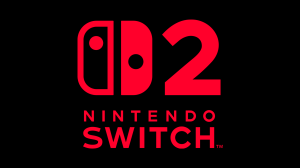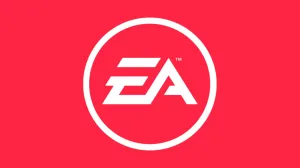Contra: Rogue Corps, the latest entry in the long-running iconic video game franchise, is a bit of a departure from many aspects of the previous games. It switches things up from the classic formula to instead favor a four-player run-and-gun gameplay style. It can, however, be just as difficult as other Contra games, and it brings forward and amplifies the series’ inherent silliness and over-the-top scenarios.
Videos by ComicBook.com
One interesting aspect of the new Contra? Konami produced a series of motion comics that set the stage for the game and and a number of questions that longtime fans might have had about it. They are delightfully goofy while also paying respect to the video game’s roots. While at an event for Contra: Rogue Corps prior to the game’s launch, ComicBook.com had the opportunity to speak with Emilio Lopez, who served as lead illustrator on the motion comics.
During our interview, Lopez explained how he became involved in working on the motion comics, stuff he wanted to make the cut that didn’t, and what folks should expect from the game if they’re at all interested in playing. You can check all that, and more, out below!

ComicBook.com: How did you get involved with this?
Emilio Lopez: It’s actually the right things kind of coalescing at the same time. So the company that, well the portion of Konami that I worked at for this project is Konami Cross Media, which is in New York City. 10 years ago, they were the production arm for 4kids productions and I worked there on the Teenage Mutant Ninja Turtles cartoon. They also used to localize the Yu-Gi-Oh cartoons. Eventually Konami picked up the company and they became Konami Cross Media, which they currently still localize and do all the work and voice work on the Yu-Gi-Oh! franchise. So when this project came along, it was like, “Hey, Emilio, we’re thinking of doing this, and we think you’re really good at it.”
Also the other part of it was for years I had been talking to Konami about doing something. I know Benjamin Kenny, who’s our lead on this one. And for years we’ve just been talking about, “Hey, what can we do, what can we do with it?” And from another portion of it, I also did promotional artwork for Konami on Metal Gear Solid V. We did like an art show for the release of that. And I also did a promotional artwork for Zone of the Enders: Second Runner where I drew every single member of the cast of the game.
And we kind of did a slow release and some new artwork on there. So it was like everybody all at once coming together for like, “Hey, yeah, this guy’s really good.” Then I ended up going with it. And then again, obviously the big decider was [director Nobuya Nakazato], who really enjoyed the work that I had done, and just said, “All right, let’s go with this guy.”
What was it like working with Contra? Obviously you spoke a little bit about working on other video games, but Contra is this iconic franchise really.
It was kind of crazy, because essentially, when I first got called in to do it, I was in New York, and they were like, “Hey, we want to talk to you about something. We can’t talk about what you’re- ” I’m like, “Hey, you know what, I just so happen to be here, so let’s go talk ait live.” And then that’s when they showed me some of the artwork, and they’re like, “We’re doing Contra.” I’m like, “What? Wait, what?” So it was just like, “Wow, we’re doing this, we’re doing a new one.”
Now what was different about this project compared to the others you’ve done?
Well for those other projects I did with Konami, they were more promotional status. They’re not exactly working in any sort of development. So it’s just like a really nice image to do whatever they need to do. Be that putting a print on a shirt or putting it on the Internet or–
So you were in the mix this time.
This one yeah. We’re actually talking with, we’re playing email tag with Nakazato-san. So it’s into it rather than just kind of doing stuff based off of it.
How was that process different from previous ones? Was it a lot of iteration? A lot of like minor changes?
Yeah, with most everything they kind of have to sort of go through Konami Japan and trying to get approved and all that stuff. So it’s just kind of finding that that point where… it’s being creative and also kind of getting a sense of what they are also looking for as well. It’s kind of hard to explain. […] You kind of get into their head and you kind of get the flow of what they’re going for. And then after that, approvals get a lot easier.

What was your favorite part of working on all this?
It was a lot of different things, and you’re just kind of adapting the characters to work within the motion comic world. One thing that’s not known about motion comics, it’s just, it’s not really a comic, it’s more of animation, and so that and it’s almost also like an engineering experiment too, trying to get these things to look good in whatever limited motion you’re given. And so I liked that sort of challenge of doing that, because I’ve worked in animation for years.
Is there anything that you wish you could have added to them? Is there anything you wished you could have added that got left on the cutting room floor or just didn’t work?
I left a couple of, at least with the original motion comics, I tried to get as much little Konami things in there, kind of fun things and we try to also do little stuff like tributes to some of the previous Contra games. I tried to get Probotector or two in there for the folks out in Europe. And I also tried, at one point [the ship captain,] she used to have little charms on the side, because I always saw the character as kind of an otaku or big video game fan, and I wanted to do a little bit more of stuff like that. Like she had a little more video game paraphernalia. So one of the ones that… for the Japanese market, I put a little LovePlus, just because I know our games are going everywhere. So I wanted to get a little something that they sort of know, and they kind of said, “Ah no, maybe you want to just pull it out.” So that’s the only thing that I wish; I wish I got the little LovePlus thing in there, just for the folks out in Japan, to be like, “I know what that is!”
For people who are maybe not super familiar with Contra or maybe even people who are familiar with Contra but aren’t super excited for Rogue Corps, what do you hope they take away from your work?
Well, I hope in general that they just… we’re out to make a fun game. That’s what it is plain and simple. I feel like don’t take it too seriously. We have a game with a fricking shark gun in it. I feel like it’s just–
There’s a panda bear playable character.
There’s a playable panda bear, there’s a shark gun in our game, we’re blowing up skeletons. It’s just meant for you to have a good time. And I feel like that’s the bigger crux of what Contra is. It’s not only about the things, the characters, but it’s also about the kind of over the topness. [In previous Contra games,] you’re literally driving on a motorcycle and you grab onto a missile and then the missile gets shot into a robot. Or then the previous game, the game after […] that one’s got a werewolf robot cyborg in it. We’re in that realm.
Set your expectations appropriately.
Yeah, set your expectations appropriately, and then I think just have a good time.
*****
Have you given Contra: Rogue Corps a shot? What do you think of the game? Let us know in the comments, or hit me up directly on Twitter at @rollinbishop to talk all things gaming!
Contra: Rogue Corps is currently available for PlayStation 4, Xbox One, Nintendo Switch, and PC. You can check out all of our previous coverage of the video game right here.
This interview was lightly edited for clarity and length.








